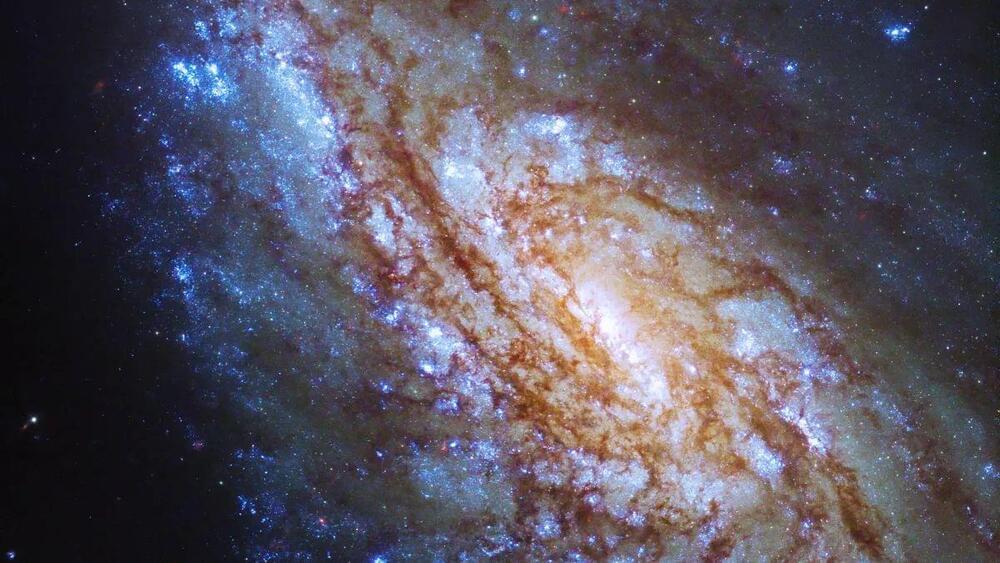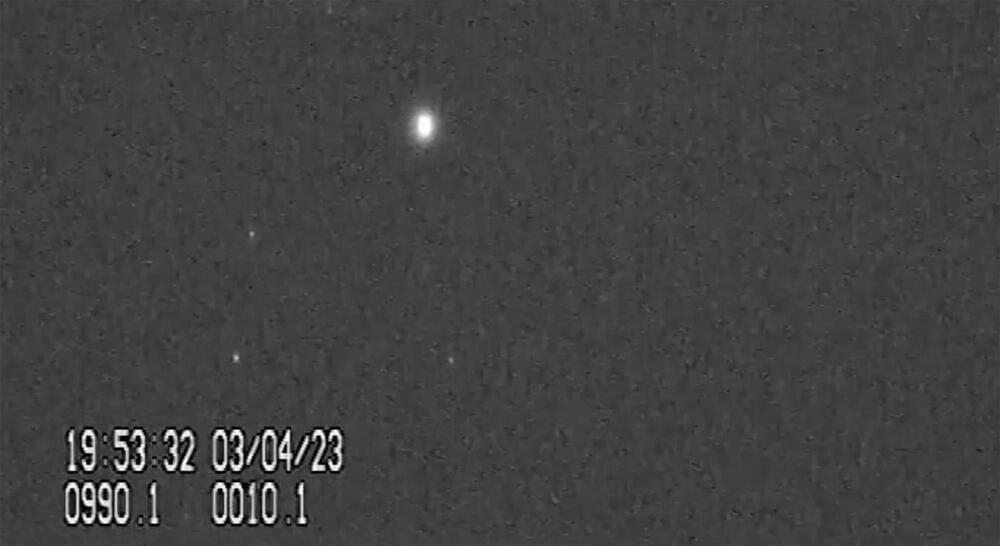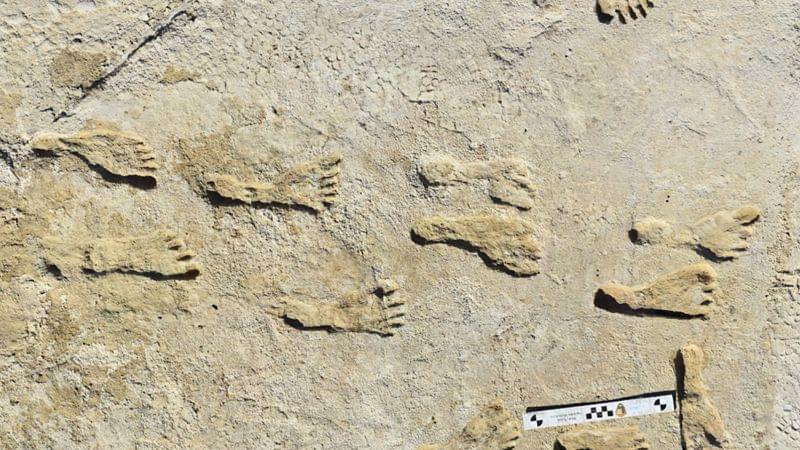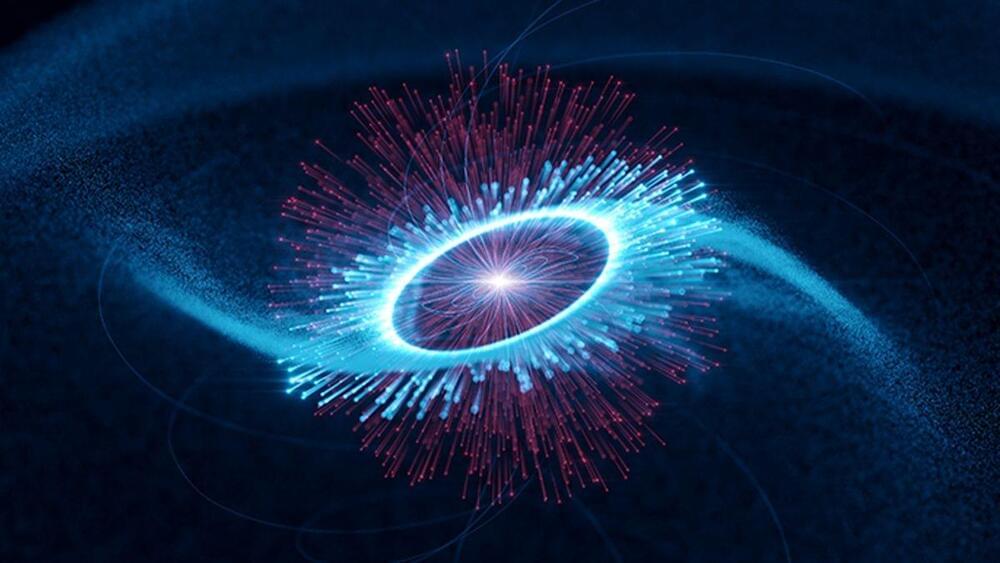NGC 4,654 is a spiral galaxy with some interesting nuances of stellar formation.



Have you seen an unusually bright object moving through the evening sky recently?
Chances are that it wasn’t one of the mysterious objects that the DoD and NASA are currently studying, but was instead one of the growing number of manmade spacecraft taking up residence in Earth’s orbit.
And this one has astronomers particularly concerned.

A team of astrophysicists says they may have found evidence for “cosmic strings”, long-hypothesized defects in the universe left over from its early in its expansion.
Cosmic strings were first suggested in the 1970s by theoretical physicist Tom W. B. Kibble, and later revived in the context of string theory. The one-dimensional strings, far narrower even than a proton, are thought to have sprung into existence in the very first second of the universe and could potentially stretch right across it.
The strings, sometimes referred to as cracks in the universe, had not been detected since they were conceived, though there were a few ideas on how we might. When strings cross, for instance, it could provide us an opportunity to find them.

A process of surgically joining the circulatory systems of a young and old mouse has been found to slow aging at a cellular level and extend the older animal’s life by as much as 10%.
Recently published in Nature Aging, a study led by researchers from Duke Health discovered the longer the animals shared circulation, the longer the anti-aging benefits lasted once the two were no longer connected.
The findings suggest that the young benefit from a cocktail of components and chemicals in their blood that contribute to vitality, and these factors could potentially be isolated as therapies to speed healing, rejuvenate the body, and add years to an older individual’s life.

A recent study reports something strange: When mice with Alzheimer’s disease inhale menthol, their cognitive abilities improve. It seems the chemical compound can stop some of the damage done to the brain that’s usually associated with the disease.
In particular, researchers noticed a reduction in the interleukin-1-beta (IL-1β) protein, which helps to regulate the body’s inflammatory response – a response that can offer natural protection but one that leads to harm when it’s not controlled properly.
The team behind the study, which was published in April 2023, says it shows the potential for particular smells to be used as therapies for Alzheimer’s. If we can figure out which odors cause which brain and immune system responses, we can harness them to improve health.

This isn’t a new discovery but something we’ll have to deal with in some places. I’ve actually drank noxious tap water and got really sick.
Most Americans take it for granted that the water that comes out of their taps is clean and safe to drink.
But a new study published by a University of New Mexico scientist with colleagues from across the U.S. warns that water from many wells and community water systems contains unsafe levels of toxic contaminants, exposing millions to health risks, including cancer.
The review in the Journal of Exposure Science and Environmental Epidemiology also finds that people living on tribal lands or in minority communities are disproportionately affected and predicts that climate change will make it harder to locate safe sources of drinking water.

When the discovery of fossilized footprints made in what’s now New Mexico was made public in 2021, it was a bombshell moment for archaeology, seemingly rewriting a chapter of the human story. Now new research is offering further evidence of their significance.
While they look like they could have been made yesterday, the footprints were pressed into mud 21,000 to 23,000 years ago, according to radiocarbon dating of the seeds of an aquatic plant that were preserved above and below the fossils.
This date dramatically pushed back the timeline of humans’ history in the Americas, the last landmass to be settled by prehistoric people. The 61 dated prints, which were discovered in the Tularosa Basin, near the edge of an ancient lake in White Sands National Park, were made at a time when many scientists think that massive ice sheets had sealed off human passage into North America, indicating that humans arrived in the region even earlier.

Summary: A recent study hints at a harmonious synchronization of movement, heart rate, and even the excitement level among audience members during classical concerts.
This in-depth exploration into the physical responses of 132 individuals during a live performance of classical pieces unveiled a fascinating cohesion in their bodily rhythms, notably in heart and breathing rates. Interestingly, personality traits, such as agreeableness and openness, appeared to elevate the propensity for such synchronization among listeners.
This novel insight opens up a captivating dialogue about the intertwining of music, communal experience, and individual physical responses.


O.0!!!!
DARPA is our favorite source for off-the-wall yet compelling technology. We’ve seen proposals for flying cars, handheld nuclear fusion devices, and now poop-powered nuclear reactors. It’s not as crazy at seems.
Wired explains that there would be multiple benefits to sticking portable, poop-powered reactors at military bases. The reactors could eliminate human waste (and the need to dispose of it) at the same time as they reduce the need to scrounge up pricey fuel sources. And since people never stop pooping, potential fuel is virtually limitless.
DARPA’s portable nuclear device doesn’t exist yet–the agency is currently soliciting design concepts. Want to apply? DARPA asks that generator designs produce 15,000 gallons per day of fuel and support an electrical load of 5 to 10 MW. The design should also be inherently safe. That means human waste shouldn’t go flying everywhere if something goes wrong with the reactor. If DARPA finds what it is looking for, perhaps the agency should consider tipping off Bill Gates and Toshiba–they’re also working on hot tub-sized nuclear reactors.